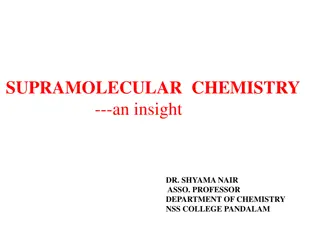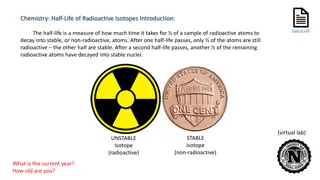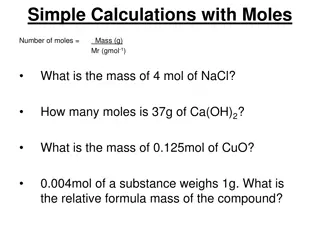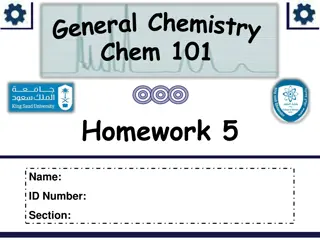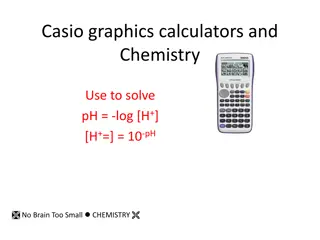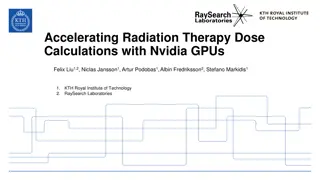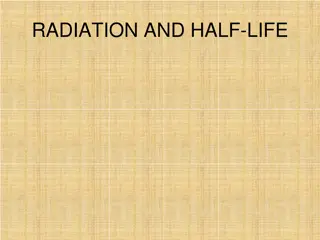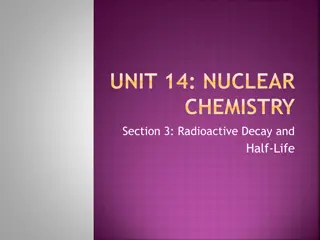Examples of Half-Life Calculations in Chemistry
Explore a series of examples illustrating how to calculate decayed amounts, remaining quantities, and half-lives of radioactive substances such as Os-182, U-238, and I-131. Understand the concepts through practical applications in chemistry.
Download Presentation

Please find below an Image/Link to download the presentation.
The content on the website is provided AS IS for your information and personal use only. It may not be sold, licensed, or shared on other websites without obtaining consent from the author.If you encounter any issues during the download, it is possible that the publisher has removed the file from their server.
You are allowed to download the files provided on this website for personal or commercial use, subject to the condition that they are used lawfully. All files are the property of their respective owners.
The content on the website is provided AS IS for your information and personal use only. It may not be sold, licensed, or shared on other websites without obtaining consent from the author.
E N D
Presentation Transcript
Example 6:- Os-182 has a half-life of 21.5 hours. How many grams of a 10.0 gram sample would have decayed after exactly three half-lives? Solution: (1/2)3= 0.125 (the amount remaining after 3 half- lives) 10.0 g x 0.125 = 1.25 g remain 10.0 g - 1.25 g = 8.75 g have decayed Note that the length of the half-life played no role in this calculation. In addition, note that the question asked for the amount that decayed, not the amount that remaining.
Example 7:- After 24.0 days, 2.00 milligrams of an original 128.0 milligram sample remain. What is the half-life of the sample? Solution: 2.00 mg / 128.0 mg = 0.015625 How many half-lives must have elaspsed to get to 0.015625 remaining? (1/2)n= 0.015625 n log 0.5 = log 0.015625 n = log 0.5 / log 0.015625 n = 6 24 days / 6 half-lives = 4.00 days (the length of the half-life)
Example 8:- U-238 has a half-life of 4.46 x 109years. How much U-238 should be present in a sample 2.5 x 109years old, if 2.00 grams was present initially? Solution: (2.5 x 109) / (4.46 x 109) = 0.560 (the number of half-lves that have elapsed) (1/2)0.560= 0.678 (the decimal fraction of U-238 remaining) 2.00 g x 0.678 = 1.36 g remain
Example 9:- How long will it take for a 40.0 gram sample of I-131 (half-life = 8.040 days) to decay to 1/100 its original mass? Solution: (1/2)n= 0.01 n log 0.5 = log 0.01 n = 6.64 6.64 x 8.040 days = 53.4 days





